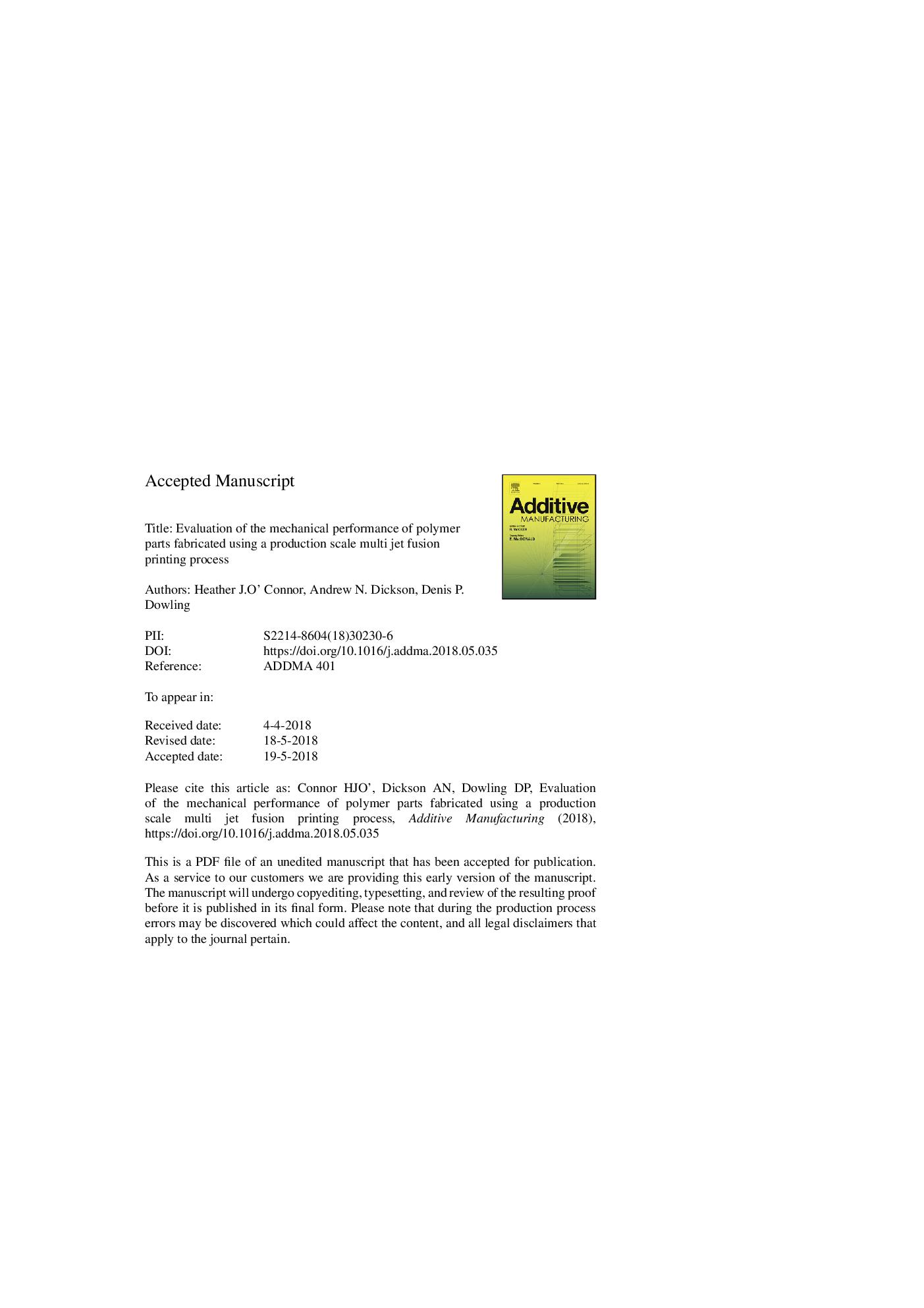| Article ID | Journal | Published Year | Pages | File Type |
|---|---|---|---|---|
| 7205763 | Additive Manufacturing | 2018 | 19 Pages |
Abstract
Additive manufacturing (AM) is rapidly becoming one of the most popular manufacturing techniques for short run part production and rapid prototyping. AM encompasses a range of technologies, including powder bed fusion (PBF) process. The purpose of this paper is to evaluate and benchmark the mechanical performance of polyamide 12 (PA12) parts, fabricated using a production scale powder bed fusion printing process (HP Multi Jet Fusion printing process). This system has a build volume is 380â¯Ãâ¯254â¯Ãâ¯350â¯mm. The printed polymer parts were examined to determine their hydrophobicity, morphology, porosity and roughness. Chemical and thermal properties of the PA12 parts were also evaluated using attenuated total reflection infrared spectroscopy (ATR FT-IR), x-ray photoelectron spectroscopy (XPS) and differential scanning calorimetry (DSC). The study highlights the influence of build orientation on the tensile (ISO 527-1:2012) and flexural (ISO 178:2010) properties. In terms of tensile strength, the parts exhibited isotropic behaviour with a maximum tensile strength of 49â¯MPa. In terms of flexural testing, the build orientations had a significant effect on the strength of the printed part. The Z orientation exhibited a 40% higher flexural strength, when compared to that of the X orientation. The maximum flexural strength observed was 70â¯MPa. The results of this rapid, production scale AM study are compared with previous studies that detail the mechanical performance of PA12, fabricated using PBF processes, such as selective laser sintering.
Related Topics
Physical Sciences and Engineering
Engineering
Industrial and Manufacturing Engineering
Authors
Heather J. O'Connor, Andrew N. Dickson, Denis P. Dowling,
